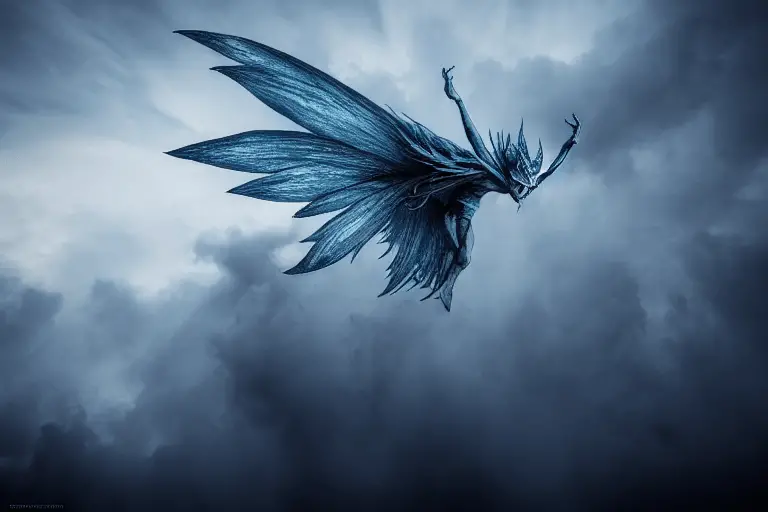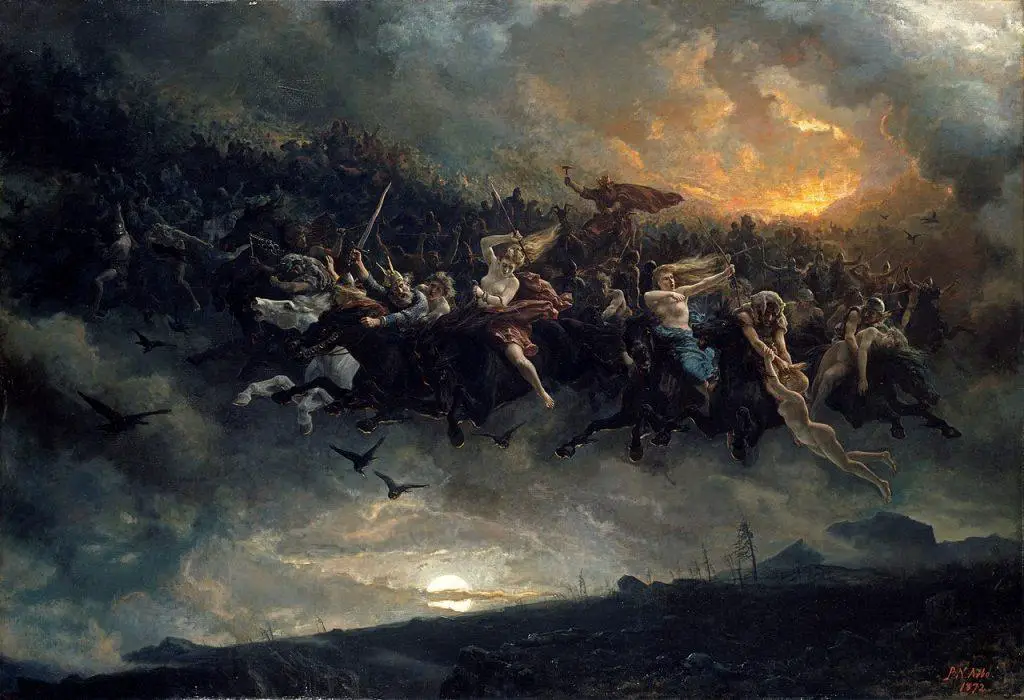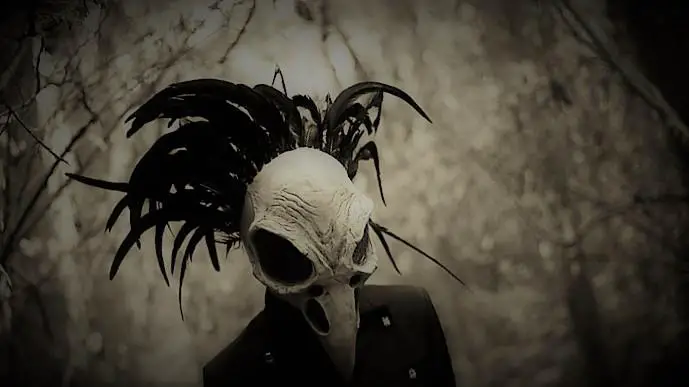Share the Lore!
By: Alex Postrado
The Winged Nightmares Of Scottish-Gaelic Lore
If you’re like most people, then your mind probably wanders to Tinker Bell, the Fairy Godmother, or even the Blue Fairy from Pinocchio whenever someone mentions fairies.
However, as bright and cheerful as pop culture makes the fae folk seem, the truth is actually somewhat far from it.
Often portrayed as tiny, winged creatures, brandishing magic wands, and fond of mischief — the archetypal fairy is positively received by the masses.
However, not all fairies are created with good in them. In fact, imagine the inverse of a fairy and make it ten times worse — that image should be pretty close to what the Sluagh is.
If you’re thinking, “how bad can they be?” Well, this certain type of fae folk is one that challenges even people’s fear of death.
If you ever come across this type of fae, then beware — disaster befalls all that they encounter.
And if you’re looking for ways to survive the Sluagh, then read on. You’ve come to the right place.
What is the Sluagh?
Celtic folklore is — no doubt — to thank for stories that continue to frighten most of us till this very day.
From the shrieking banshees to the legendary Dullahan, Celtic myth has introduced us to creatures that are nothing short of terrifying.
But, perhaps, none matches the horror brought about by the Sluagh.
Sluagh is a Scottish-Gaelic name that derives its roots from the Old Irish slúag — which means host, army, or assembly.
Stories detail that they take on a birdlike appearance even when they are not in flight — with bony claws as hands and feet; thin, dark hair; and a beak-like mouth complete with leathery wings that are kept close to their bodies at all times.
Stories recount the Sluagh flying at nighttime in groups similar to a flock of birds.
They are also said to be flying from the west in a crescent formation and entering the home of their victim — often a sick or dying person — through west-facing windows and doors.
This is why doors, windows, and other entryways facing west were commonly shut tight in old Irish and Scottish homes in fear that the menacing Sluagh will steal the soul of their sick.
In the unfortunate case that the wicked Sluagh succeeds in their plan, they are said to transport the soul of the victim to a faraway location through the air.
In Scotland, the Sluagh are usually associated with the Wild Hunt — a horde of horrifying creatures in mad pursuit of souls to steal come nightfall.
While already terrifying at its core, the onslaught of the Wild Hunt is believed to be a signal of war or disaster.
And with tales pointing to the Sluagh, seemingly getting a kick out of tormenting victims, it is not hard to believe that they are indeed bad omens, as well.

How to Summon the Sluagh and How to Get Rid of Them
Since stories consistently tell of how horrible it is to cross paths with the Sluagh, it is almost guaranteed that people back then were cautious not to catch their attention.
However, there are two ways you can accidentally call on the Sluagh and fall prey to them.
The first one — and the more anxiety-inducing of the two — is to utter the name Sluagh. One mistake and by nightfall, you will find yourself at the mercy of the dreaded fae folk.
The second one is by the sadness within one’s heart.
It is very likely that — at least once in our lives — we will feel grief and loneliness so great we can almost swear we are dying.
In Celtic folklore, however, the death will most probably be caused by the Sluagh catching on to the overwhelming feeling of sadness.
If by any chance, either of these two summons the Sluagh, there are still a few things you can do to save yourself from the horde of soul-stealing monsters.
One thing you can do is to sacrifice another in your place. Yes, your soul will be spared, but another life will be taken instead.
But if you are seriously thinking about this, then you should ask yourself, does your soul really deserve safety? Or are you already one with the cruel Sluagh — only alive and breathing?
Moreover, some also say that evading the Sluagh by hiding, blocking, and running from them works, too. You just have to be really good at it.
If all this sounds too difficult, then don’t tempt your fate by mentioning the fearsome creatures’ name. And if you’re feeling extra lonely, shut your doors and windows, and make sure to stay at home before night falls.
Though, if all else fails and the Sluagh still finds your soul at their clutches, then I’m afraid everything is over.
Your soul will never find peace — not in the afterlife. Not even in heaven nor hell.
Your soul will be one with the dreaded flock — eternally roaming the skies and looking for yet another soul to take.

Ghost or Fairy Host?
It is true that Celtic folklore is also responsible for quite a few famous fairy narratives we have come to know.
And at the forefront of the malevolent and harmful fae folks are the Sluagh.
These fairies are often thought to be creatures that have gone amok.
Challenging the concept of delicate and often-beautiful fairies portrayed in the media, the Sluagh, on the other hand, are haggard and scraggly-looking — with skin desperately clinging to their bony form.
However, with the rise of Christianity in Ireland, also came the changes in the tales of the Sluagh.
From dangerous fairies, the Sluagh or Sluagh na marbh had been transformed into the unforgiven dead.
They became restless spirits that perpetually roam the skies and are said to be unwelcomed in both heaven and hell.
Regardless of this change, though, their goal remains the same — to fly from the west, looking for souls to snatch — both of the innocent and the damned — to ultimately add to their flock.
Aside from the original Celtic lore and the version introduced by Christianity, there are also other accounts that tell of the Sluagh being different from what the two entail.
Some stories claim that the Sluagh are actually spirits of vengeful unbaptized children that have returned to seek their revenge.
Other tales detail that instead of malevolent birdlike spirits, they are presented by harsh gusts of wind that boil and burn the skin of whoever encounters them.
Other accounts also claim that the Sluagh are actually fallen angels — which is a rendition that is somewhat similar to the Christian version of the story.

Is the Sluagh Real or Not?
Depictions of the Sluagh can be found even in modern-day pieces of literature, films, and games.
In Laurell K. Hamilton’s series of novels, Merry Gentry, the Sluagh’s dark and dangerous nature is downplayed in comparison to other types of fae folk, like the Seelie and Unseelie.
Moreover, in 2020, a found-footage horror film titled, The Haunting of Grady Farm, was released and it portrayed different creatures of Irish and Scottish lore — even focusing on the reimagined tales of the Sluagh.
In the gaming world, representations of the creatures are present in both board and video games, as well as roleplaying ones.
Though modern depictions of the Sluagh now differ in origins, goals, and appearances — which makes it quite hard for us to picture them as one real thing — they were once very real in the minds of ancient people.
In a time when unexplained scenarios were prevalent and belief in superstition was at an all-time high, the Sluagh was what people in the olden days had.
Providing the answers to horrors that none of them could decipher.
And while, scientifically speaking, the Sluagh may not be real, they are very much part of our history — cradled by ancient nightmarish tales that, apparently, even our modern world can’t steal.
References:
Irish Faerie Folk Of Yore And Yesterday: The Sluagh The Sluagh: Spirits Of The Unforgiven Dead Sluagh - Irish And Celtic Myths And Legends, Irish Folklore And Irish Fairy Tales From Irish Gods And Monsters The Sluagh Undulating Shadows: The Sluagh
